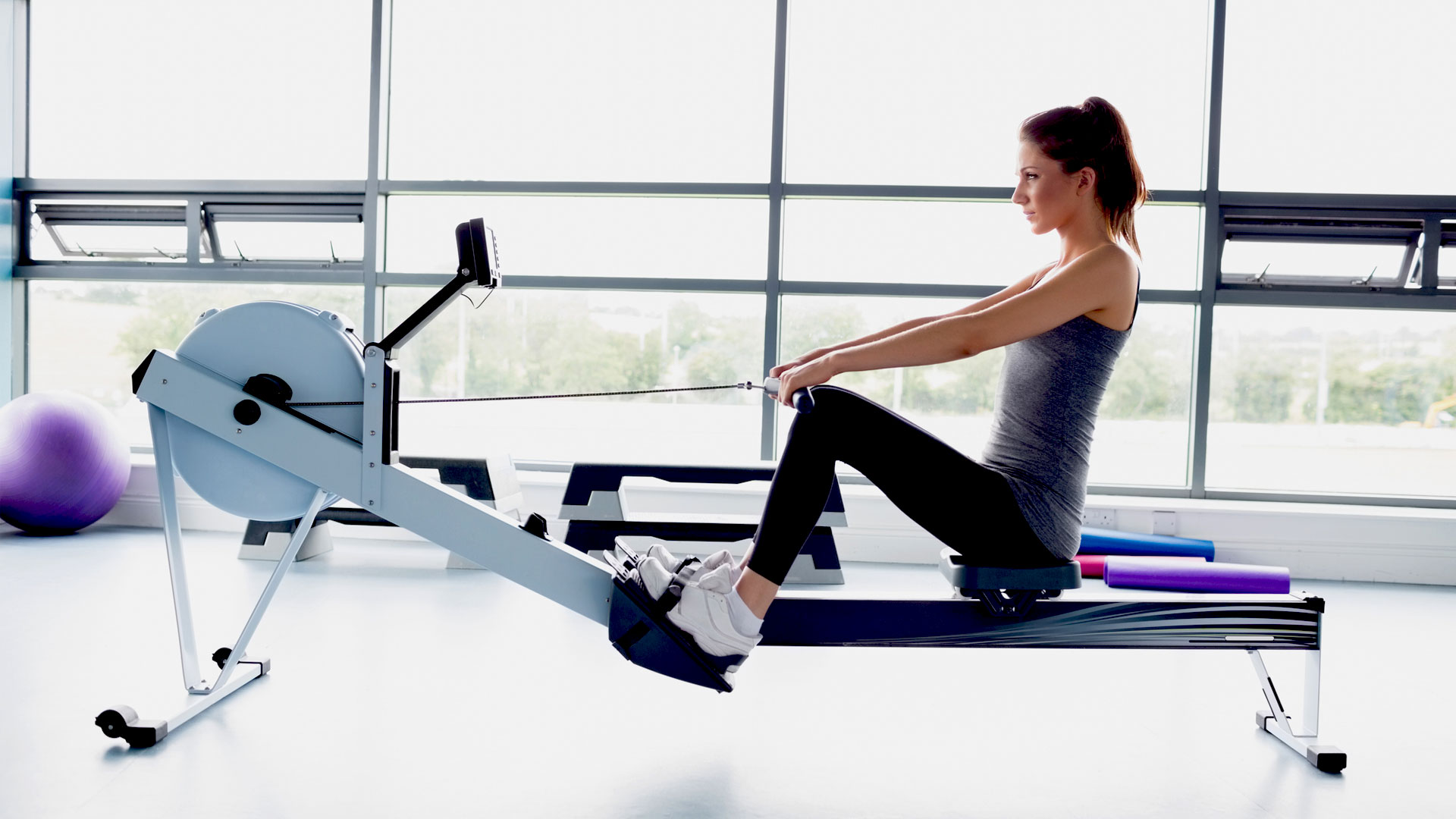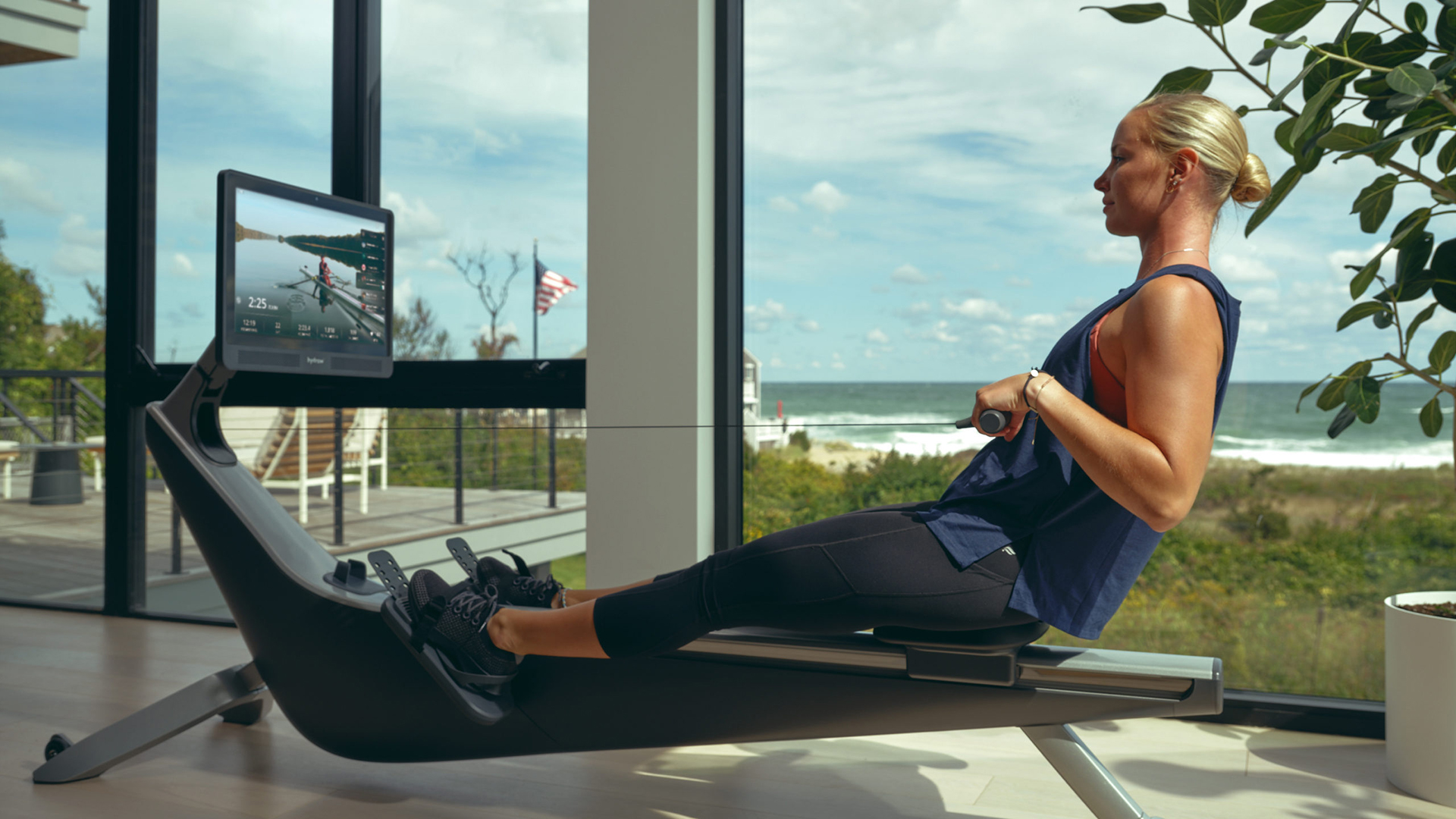10 benefits of using a rowing machine
10 rowing machine benefits that will have you making a beeline for this piece of home gym equipment.

In recent years, rowing studios have opened all over the world, many gyms are running group classes and there's been a steep rise in purchases of rowing machines for personal use at home. And it's no surprise: the best rowing machines offer an endlessly adaptable and efficient workout that's suitable for all ages and levels of fitness.
The muscles worked by rowing machines are numerous; these bits of kit will challenge your arms, core, legs and more. And they're low-impact, too, so they're good if you have joint issues.
Here are all the full benefits of rowing machines, backed up by experts and research.
Top 10 benefits
1. It uses all the major muscle groups
People often imagine that the rowing machine mainly works the arms, but it actually works the whole body: 86% of your muscles on every stroke, according to Sarah Fuhrmann, certified rowing instructor and owner of UCanRow2, a rowing training and certification company.
A session on the rowing machine will target your leg muscles (quadriceps, gastrocnemius, soleus and hamstrings) plus your glutes, your back (latissimus dorsi, trapezius and rhomboids), arms (biceps and triceps) and core. That's a lot of bang for your buck!
2. It’s a super-adaptable workout
Whatever workout you're aiming for, the rowing machine can deliver.
"I like to say that the rowing machine 'meets you where you are and takes you as far as you want to go'," Fuhrmann told Live Science. "It puts you in the driver's seat of your workout. It responds to how hard you push and pull, so you can work as hard or as little as you want, for as much or as little time as you have."

If it's a short, sharp anaerobic blast you’re after, try HIIT (high-intensity interval training), interspersing short spurts at maximum effort with rests. For a UT2 (steady-state, aerobic) session, take the strokes per minute down to 18-20 and stay on for longer.
You can even get a strength-training-style workout by pushing hard like you're lifting a heavy barbell, said Fuhrmann. "For true strength, you'll want to add some weight training off the machine, but you can make very good progress initially with just rowing."
3. It's a great calorie burner
Rowing is an incredibly efficient way to burn calories, so if weight loss is your goal, head straight for the rowing machine. According to the 2011 Compendium of Physical Activities (and using the formula MET x bodyweight in kg x 3.5), someone weighing 180lb can burn around 200 calories in half an hour of rowing using moderate effort (this will be less for someone weighing less and more for a heavier person). This goes up to an impressive 500 calories for the same person doing a very vigorous 30-minute workout.
4. It's time-efficient
Because rowing works so many muscles and burns all those calories, it's an exceptionally time-efficient workout. You'll feel the exertion from the first few strokes. You can achieve a worthwhile training session in as little as 15 or 20 minutes, especially when you're starting out.
"Just row for a few minutes for your first workout," advised Fuhrmann, "adding more time over a few sessions. Remember this is a full-body workout, so you may feel it sooner than you expect. Work progressively and you'll be doing longer distances and higher-intensity workouts in no time!"
5. It's low-impact
Rowing is the ultimate low-impact workout. Because there's no running or jumping involved, there's nothing in the rowing motion to jar your joints.
Unlike many low-impact forms of exercise, however, it is still strenuous. "Rowing is amazing," said Fuhrmann, "because it can help you work on so many areas of fitness. For example, you can progress in power, strength, speed, endurance and accuracy on just this one machine."
- Related: What is LISS cardio?
6. It's good for your bone health
Rowing may be low-impact, but that doesn't mean it won't have a beneficial effect on your bone density (essential for staving off osteoporosis).
Research published in the Osteoarthritis and Cartilage journal looked at bone reabsorption and cartilage stress markers in 60 rowers, cross-country runners, swimmers, and sedentary people. It showed the rowing machine offered the best of both worlds: significant bone-building benefits without the levels of cartilage stress produced by running.

7. It can improve your grip strength
Just by holding the handle and pulling, you're strengthening the muscles in your forearms and hands with every stroke. According to an article in the journal Clinical Interventions in Aging, grip strength is a useful indicator of good health in older people and is associated with overall strength, upper limb function, bone mineral density, the likelihood of falling and good nutrition.
This is not your cue to grip tightly, though, cautioned Fuhrmann, as good rowing technique involves a light hold on the handle. "I don't want people death-gripping the handle!"
8. It's good for all fitness levels
"Rowing is for everybody," said Fuhrmann. "It's safe for virtually everyone, and will meet you where you are with your fitness, so Olympians and novices can be rowing right next to each other, both getting a great workout and having fun."
You can adjust the resistance level on most rowing machines, which makes it particularly suitable for seniors, and is a great way to maintain muscle, bone density and flexibility well into old age.
9. It's good for your mental health
Fans of the rowing machine will tell you how helpful it can be for your mental health.
"One of the most amazing benefits of rowing is how calming the rhythm of the stroke can be," said Fuhrmann. "If you row at a lower, slower pace, the stroke becomes meditative, restorative and magical. A gentle, Zen-like row can have all the same calming mental benefits of a leisure walk."
10. It's useful cross-training for other sports
The beneficial effects of cross-training are well known. A review in the journal Sports Medicine concluded that cross-training could be highly beneficial for the general population in terms of overall fitness, and could also be useful in rehab and when suffering from overtraining or psychological fatigue.
Whatever your discipline, you can find a rowing machine workout to suit. To build speed, focus on sprints; for endurance, go for long, low-rate sessions, and to build overall fitness, try a mixture of different workouts.
Sign up for the Live Science daily newsletter now
Get the world’s most fascinating discoveries delivered straight to your inbox.
Patricia Carswell is a freelance journalist specializing in health and fitness. She has written for a huge variety of national newspapers, magazines and websites, including Healthy, Top Santé, Women's Fitness and fitandwell.com, and writes a monthly column for British Rowing's content hub. She's the founder and host of rowing blog and podcast, Girl on the River, where guests have included Sir Matthew Pinsent and multiple Olympian Frances Houghton MBE. She keeps fit by rowing, walking, and wild swimming, and is at her happiest when on or in the water.











